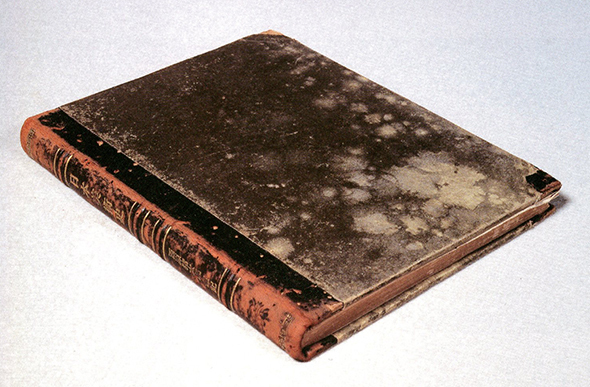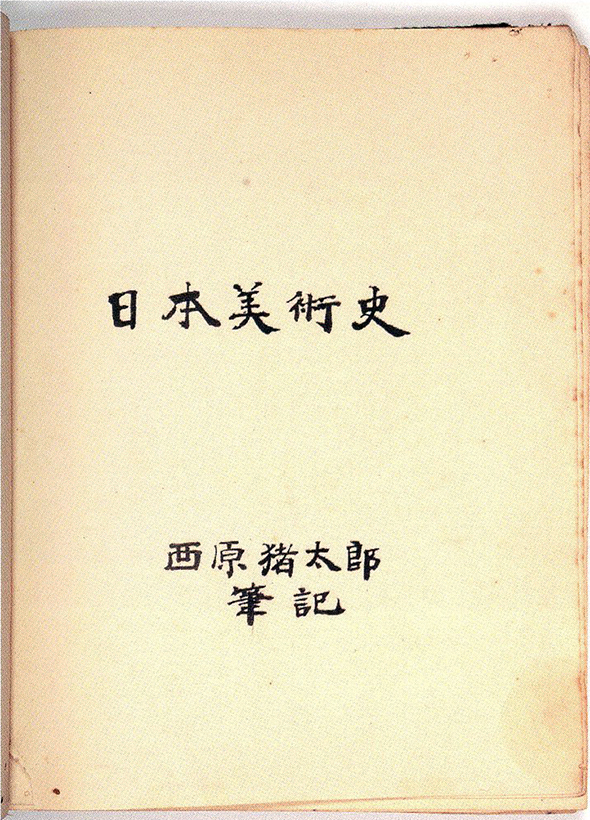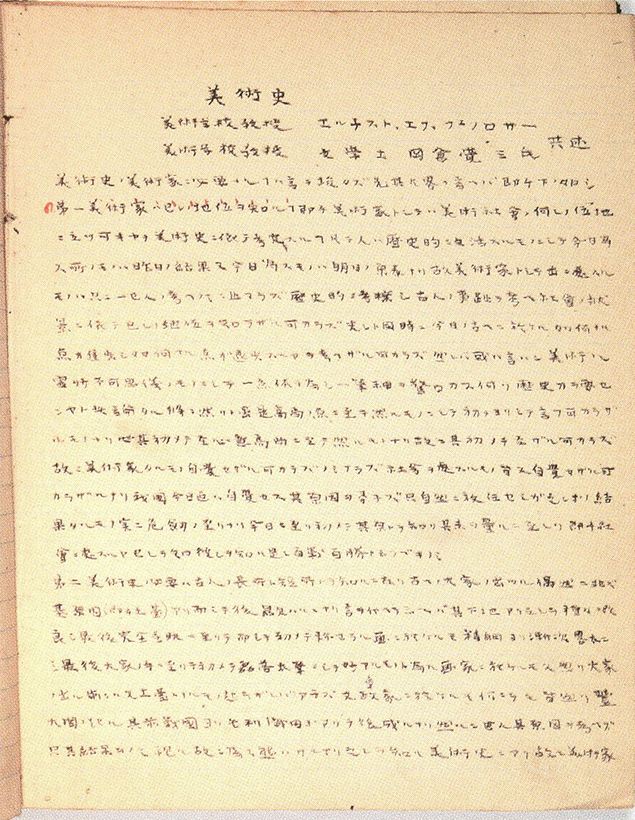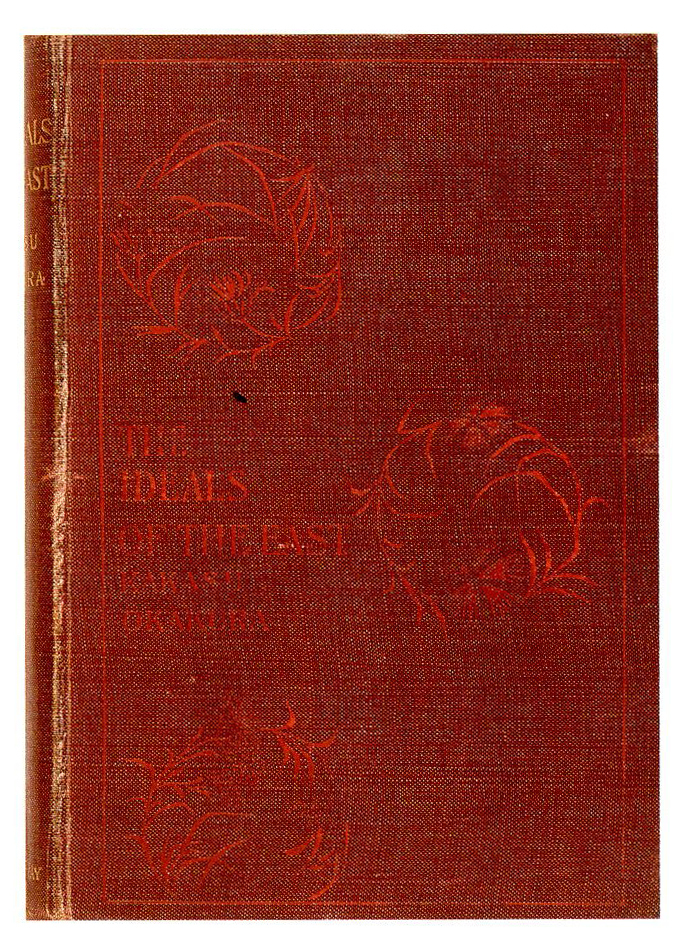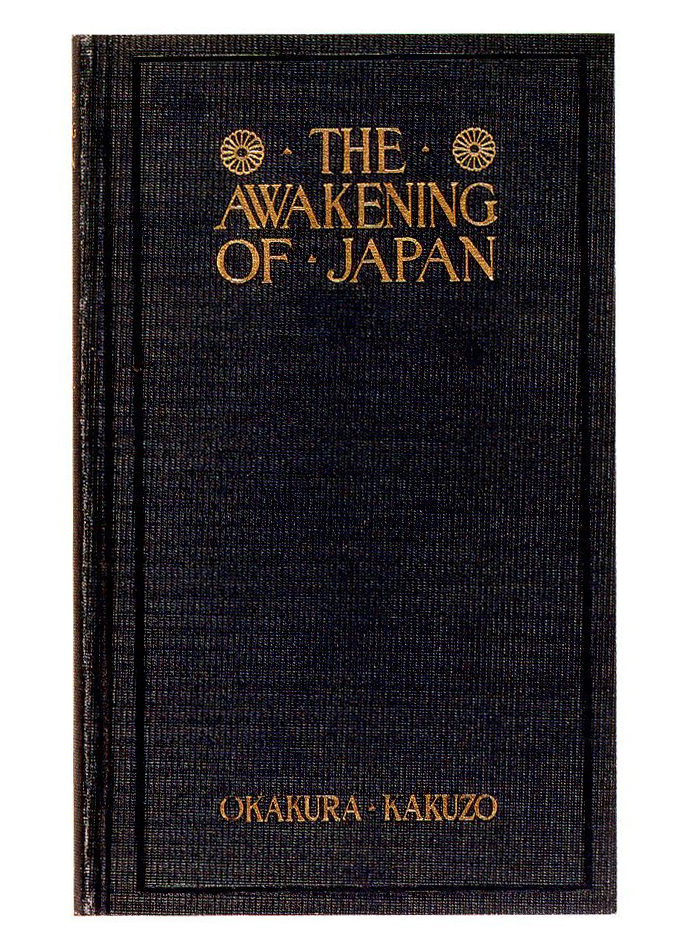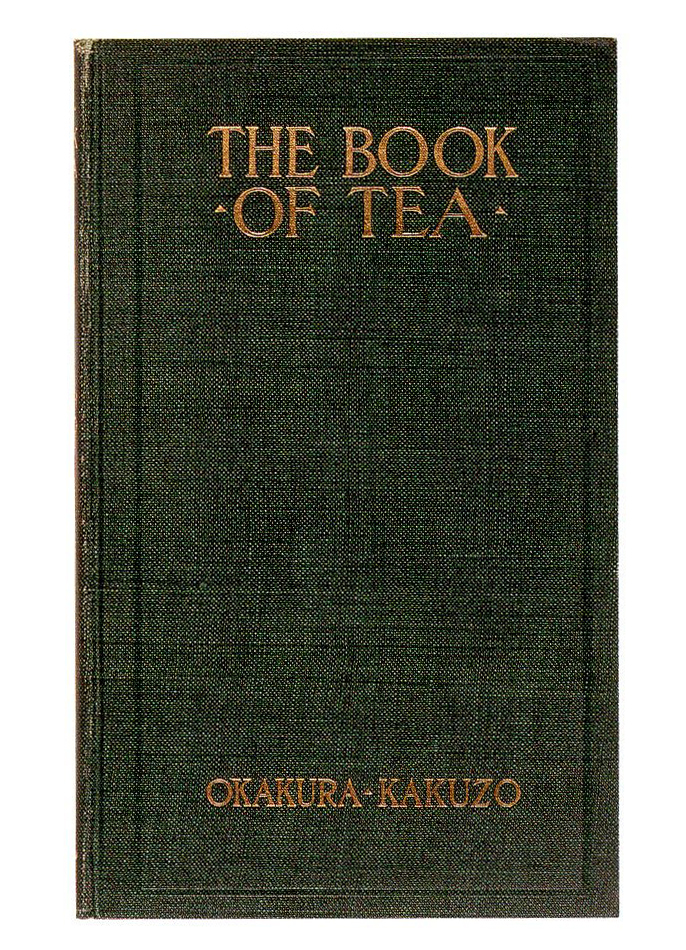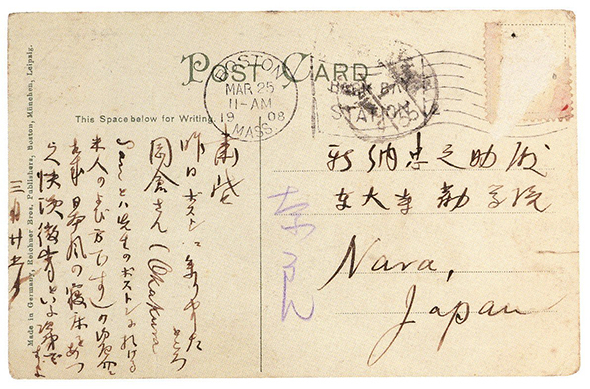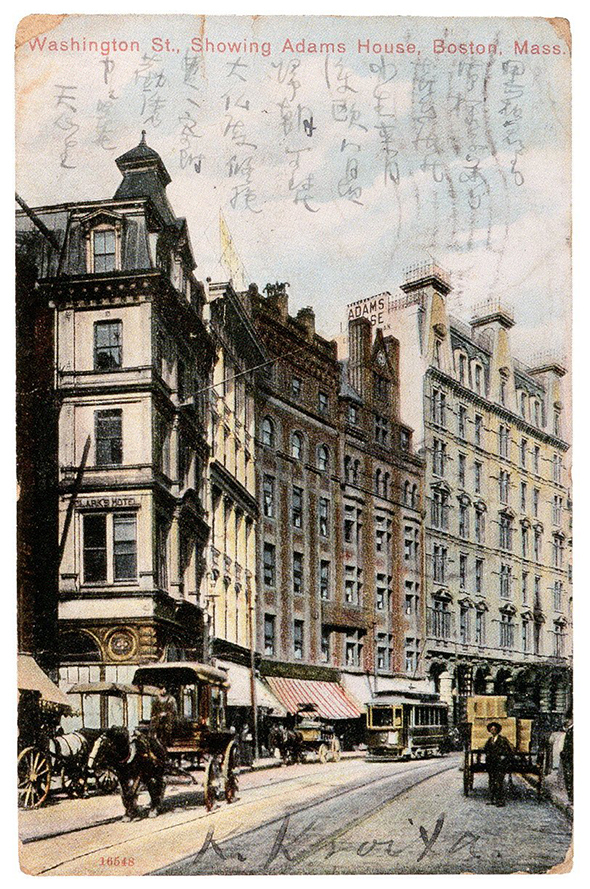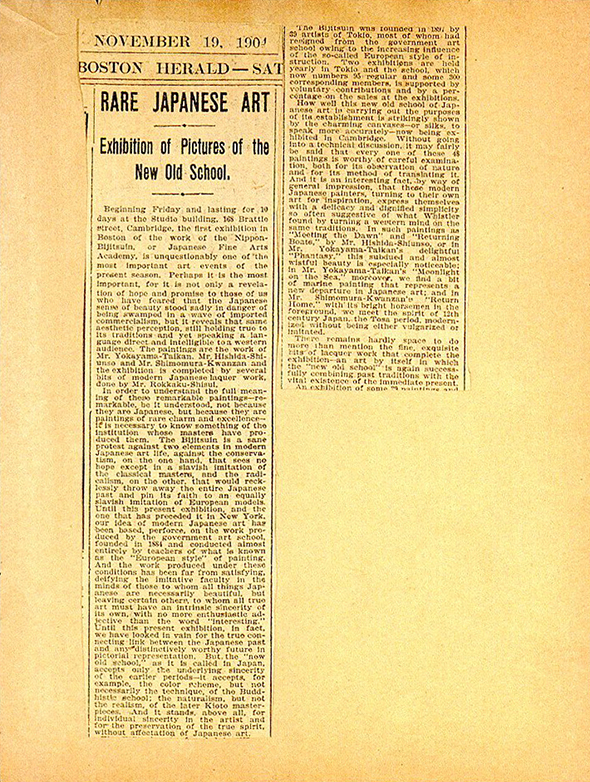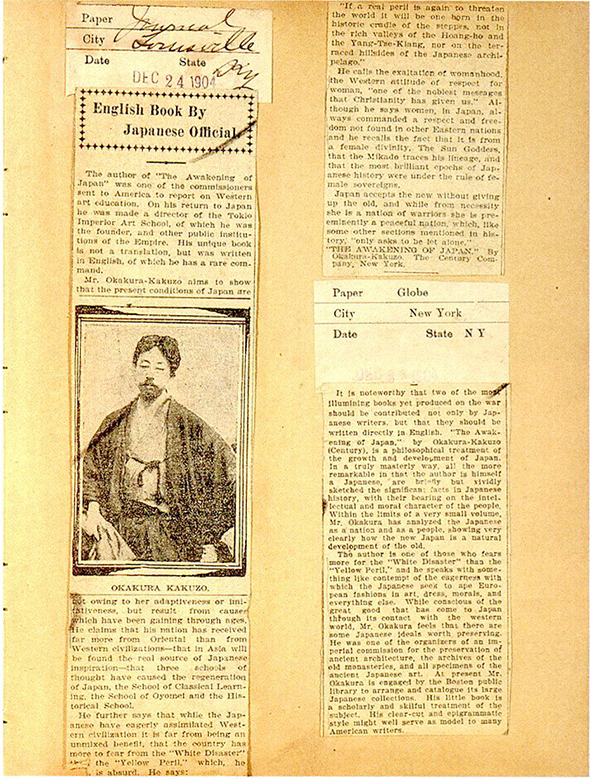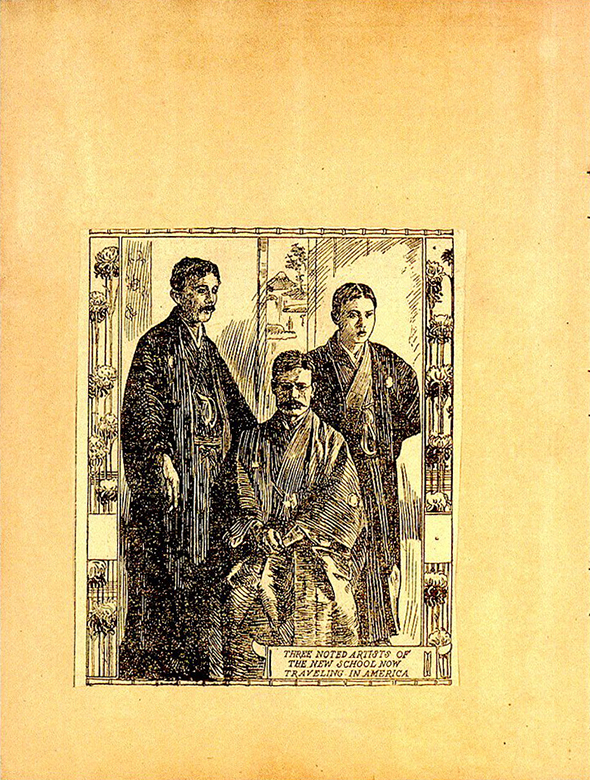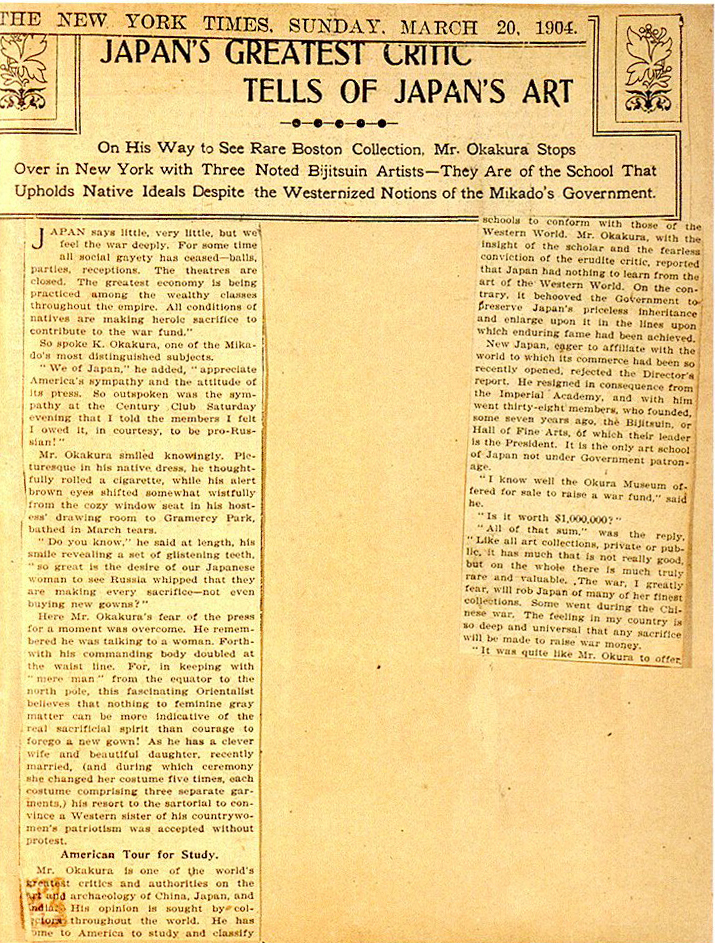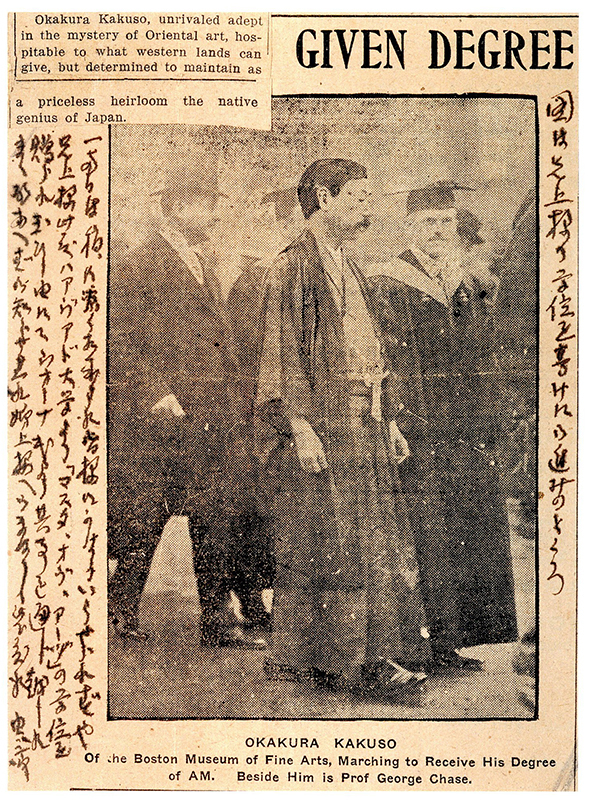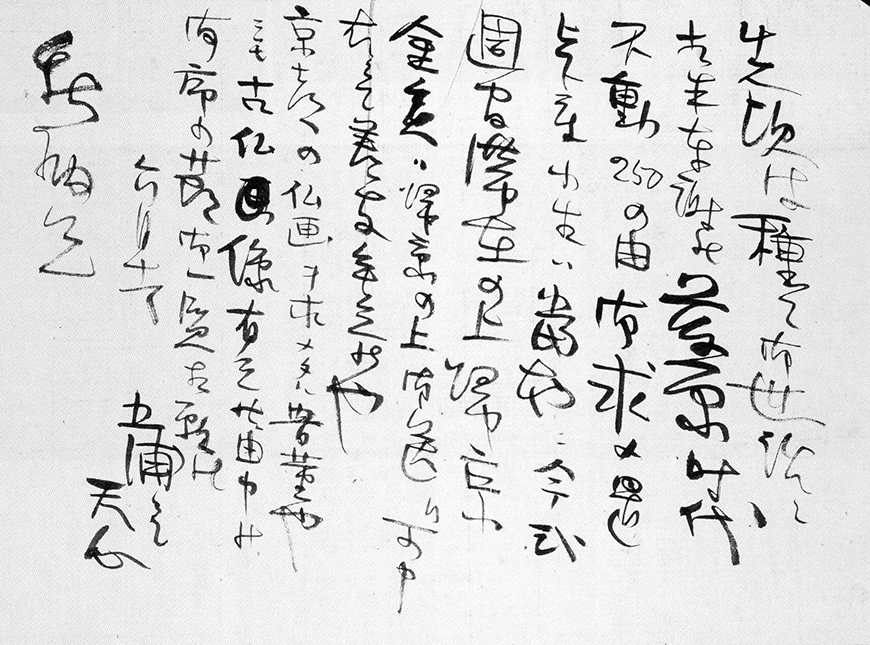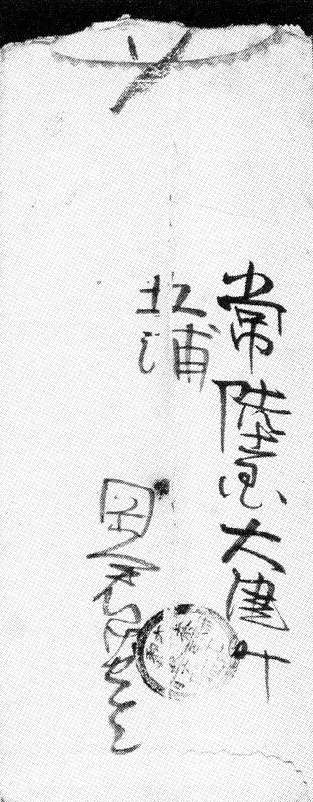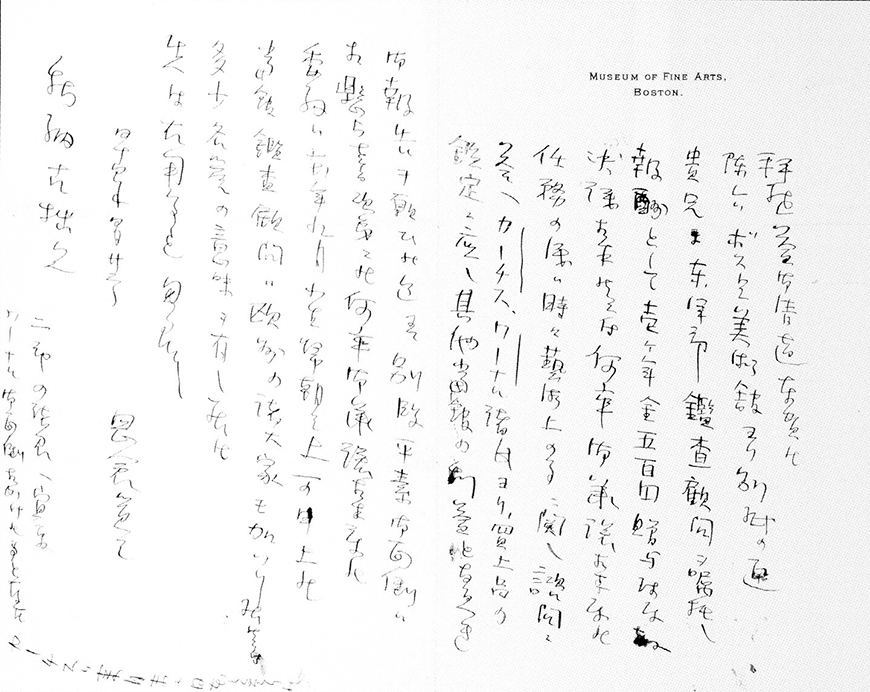
"The Ideals of the East" written by Tenshin Okakura (the first edition; Courtesy of Tenshin Memorial Museum of Art, Ibaraki)
The book begins with the famous sentence "Asia is one." It was published by John Murray, a publisher in London, in 1903. This is the Tenshin's first book written in English in which he discussed a variety of subjects ranging from art to civilization.
"The Awakening of Japan" written by Tenshin Okakura (the first edition published in 1904; Courtesy of Tenshin Memorial Museum of Art, Ibaraki)
This book was published by Century Company, a publisher in New York, while Tenshin stayed in the United States in order to take up a position at Museum of Fine Arts, Boston. In this book, he discussed the Japanese history from the foundation of the Tokugawa shogunate to the Meiji Period in terms of politics and thought.
"The Book of Tea" written by Tenshin Okakura (the first edition published in 1904; Courtesy of Tenshin Memorial Museum of Art, Ibaraki)
In this book, Tenshin introduced the beauty and artistic spirit of the East through the Japanese tea ceremony.
The Japanese language version of "The Book of Tea" can be read at "Aozora Bunko," an e-library on the Internet. The original written in English can also be read at Project Gutenberg, an e-library.
"The Book of Tea" at Aozora Bunko
The Book of Tea 
Chunosuke Ni-iro (1869-1954) studied sculpture under Koun Takamura at Tokyo Fine Arts School. Although he became an assistant professor at Tokyo Fine Arts School just after graduating from the school, he resigned as the professor together with Tenshin in 1898, and joined in establishing the J明朝系apan Art Institute. The Japan Art Institute's second department (sculpture) was separated as an independent art institute, which specializes in restoring important cultural assets, such as national treasures, when the Japan Art Institute was revived after Tenshin died. Ni-iro became a director of the art institute. Currently, the art institute is operated as a public interest incorporated foundation "Bijyutsuin" at the restoring center in Shimogyo Ward, Kyoto, and repair national treasures and important cultural assets while training repair technicians. Ni-iro invited Koun Takamura as an adviser when the Japan Art Institute's second department was founded. Ni-iro participated in restoring the standing figure of Fuku Kensaku Kan-non at Todaiji Temple, and reproducing the figure of Kudara Kan-non (owned by Tokyo National Museum).
The Ni-iro family donated materials owned by Chunosuke Ni-iro to Tenshin Memorial Museum of Art, Ibaraki, in 2014. The materials range from documents about the Japan Art Institute, cultural properties protection policies and Tokyo Fine Arts School to those of Museum of Fine Arts, Boston, and include important ones, such as "Japanese Art History," transcripts of lectures, taught by Fenollosa and Tenshin, and Tenshin's letters.

Kokichi Hayazaki went to Tokyo in 1891, and studied painting under Gaho Hashimoto while apprenticing himself to Tenshin. Hayazaki entered Tokyo Fine Arts School in 1892, and went to China as an assistant to Tenshin in order to gather information about the Chinese art. Hayazaki took the opportunity to be determined to research the Chinese art. This picture taken when they visited China indicates that Hayazaki traveled in China wearing traditional Han clothing with his hair in a pigtail.

Taikan and Shunso, who went to the United States with Tenshin, traveled across the United States, and held exhibitions in Europe. The scrapbook, which gathers newspaper articles reporting their activities, consists of 52 pages, including a cover. It contains some important materials, such as an article about "The Awakening of Japan" that was published when Tenshin stayed in the United States and "Japan and the 'Yellow Peril'," a newspaper column.


In this letter, Tenshin thanked Takamura for her hospitality, and asked Ni-iro to go to Toyama. Tenshin wrote "Tokyo Yanaka, the Japan Art Institute, Kakuzo Okakura" on the back of the envelope.


A letter saying that Tenshin recommended Ni-iro for a position in Museum of Fine Arts, Boston (right; 1911; Courtesy of Tenshin Memorial Museum of Art, Ibaraki)
Arthur Fairbanks, the director of Museum of Fine Arts, Boston, wrote that Ni-iro was appointed a member of the Advisory Staff on the recommendation of Tenshin. In a letter sent on the same day, Tenshin also asked Ni-iro to be the adviser because Tenshin recommended Ni-iro.


References:
1) Tenshin Memorial Museum of Art, Ibaraki. 2007. Shozo Shiryo Mokuroku (List of Archival Documents). Kitaibaraki: Tenshin Memorial Museum of Art, Ibaraki.
2) Tenshin Memorial Museum of Art, Ibaraki. 2016. Ni-iro Chunosuke Kyuzo Shiryo Mokuroku I, "Nihon Bijyutsushi" Kogiroku / Shokanhen (List of Archival Documents of Chunosuke Ni-iro I, "Japanese Art History," edited transcripts of lectures / letters). Kitaibaraki: Tenshin Memorial Museum of Art, Ibaraki. - Supported by the Pola Art Foundation, a public interest incorporated foundation.
3) Ibaraki University. 2014. Rokkaku-do Saiken no Kiseki (Tracing Reconstruction of Rokkaku-do). Mito: Ibaraki Shimbun.
Materials provided by:
Tenshin Memorial Museum of Art, Ibaraki / Izura Institute of Art & Culture, Ibaraki University / Izura Kanko Hotel Taikanso
"The Ideals of the East" written by Tenshin Okakura (the first edition; Courtesy of Tenshin Memorial Museum of Art, Ibaraki)
The book begins with the famous sentence "Asia is one." It was published by John Murray, a publisher in London, in 1903. This is the Tenshin's first book written in English in which he discussed a variety of subjects ranging from art to civilization.
"The Awakening of Japan" written by Tenshin Okakura (the first edition published in 1904; Courtesy of Tenshin Memorial Museum of Art, Ibaraki)
This book was published by Century Company, a publisher in New York, while Tenshin stayed in the United States in order to take up a position at Museum of Fine Arts, Boston. In this book, he discussed the Japanese history from the foundation of the Tokugawa shogunate to the Meiji Period in terms of politics and thought.
"The Book of Tea" written by Tenshin Okakura (the first edition published in 1904; Courtesy of Tenshin Memorial Museum of Art, Ibaraki)
In this book, Tenshin introduced the beauty and artistic spirit of the East through the Japanese tea ceremony.
The Japanese language version of "The Book of Tea" can be read at "Aozora Bunko," an e-library on the Internet. The original written in English can also be read at Project Gutenberg, an e-library.














